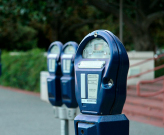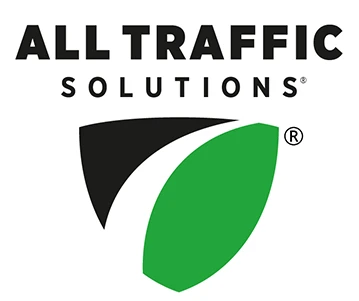Regardless of whether you’re buying one component of a parking availability and guidance solution, outfitting one lot or garage, or crafting a system for your entire parking environment, your goal is to solve your parking challenges, both today and into the future. You need something that is flexible enough to cost-effectively instrument and disseminate information throughout your diverse infrastructure—lots, garages, street parking—with the right solution to meet your accuracy needs, at the price that will drive value, that doesn’t require an engineering degree to implement, and that has an easy-to-demonstrate impact on your organization.
Nobody thinks about platform when picking a parking availability and guidance solution. In fact, buyers rarely think about platform at all when they’re buying any parking solution. But, it could be the most important part of any technology decision you make.
What is an “open platform”?

You hear about platform in many industries today, but what does it mean really? When we talk about platform, we’re talking about a solution that allows you to integrate with many different components, such as sensors, signs, data sets, and external systems, without extensive custom coding or other IT or engineering work. The key difference between an open platform and a closed system is the ability to connect to different data sources and outputs without having to pay for a custom coding effort to get it to integrate with your existing systems, new technologies or a specific component from another manufacturer. The open platform has pre-built integrations or toolkits that make this a simple, turnkey process that the supplier has to worry about, not you.
So, what does an open platform give you that a closed or proprietary solution doesn’t? Read why selecting a turnkey parking availability solution based on an open platform that’s device agnostic is the best decision you’ll make about your parking technology stack.
You want the most accurate parking counting solution for each separate component of your parking operation
Most parking operations have a number of different environments in which tracking availability is necessary—garages, lots and street parking, to name the most common—and a variety of applications they want to deploy. Most frequently these include availability and guidance, access control, safety, and reservations, but messaging, mass notifications, custom analytics, and integrations with other systems are also on many parking professionals’ radars too. Deploying the best solution to fit the problem is the way to get the results you’re looking for. The challenge is that there isn’t typically one technology that fits every environment or configuration, and there aren’t any suppliers who cover every possible scenario.
For example, at a large university, you may have:

Surface lots, some with clear access points and some with no defined entries or exits, some with controlled access, some with design standards that restrict the use of poles or delimiters, some with very low light levels, some with power and some without, some with occlusions, some unsurfaced or some set aside for specific events or venues.
 Garages, which may or may not be access controlled, may include meters, may have multiple exits and entries, may have premium spaces (reserved, handicapped or expectant mother) or rooftops that need space level availability and guidance.
Garages, which may or may not be access controlled, may include meters, may have multiple exits and entries, may have premium spaces (reserved, handicapped or expectant mother) or rooftops that need space level availability and guidance.
Street parking that may be metered or open, may have time restrictions, may be reserved for specific events or times or may have design constraints that restrict accurate counting.
The last thing you want is for each structure to have a varying rate of accuracy in the number of spaces occupied. If your garage availability solution is 99% but your surface lot solution is at 80% and your street parking solution even lower, your aggregate accuracy rate is very low. And that’s not a daily accuracy rate if you have multiple turns on each space. Even if you have an accuracy rate of 90% across all your environments, if you have four turns a day, you are producing directionally accurate data, at best.
You may also have a number of different needs or applications, for example:

- To provide parking availability information, both on signage and directly in your campus app, to provide a one-stop shop for students
- To integrate with your permitting system to control access to specific lots using ALPR or Bluetooth
- To leverage your mass notification system to alert those on campus during events via signage or direct app integration
- To integrate with multiple parking management systems to provide a campus-wide view into available spaces
- To include reservation services for pay-to-park events or feed availability to an aggregator
Across everything, though, for every kind of operation, you likely want one source of truth: one parking availability and guidance system to reference where you can see the availability, utilization, occupancy time, duration of stay, and type of parking stay for every lot, garage or street parking space under your management. You want to have one place where you can gather your data to make the best decisions in real time and on the fly, provide guidance for parkers in real time, and understand your environment based on true data, not opinion or anecdote.
This can only happen when you have very high accuracy rates. Without that, you’re still working from supposition, making it difficult to solve the problem, whether it’s getting students to the closest available parking spaces and to class as quickly as possible (helping increase student retention), shoppers into spaces and shops without frustration (so they can spend money), employees into their seats (so they’re productive and ready to work), or visitors into and out of their event venue without backups (to reduce traffic, congestion and emissions). For each of these considerations, there is a “best fit” technology, one sensor type or technical solution that provides the most appropriate accuracy level at the right cost. Finding one manufacturer who offers each of the different sensor types or integrations can be challenging if not impossible.
In our next post, learn more reasons why selecting a turnkey parking availability solution based on an open platform that’s device agnostic is the best decision you’ll make about your parking technology stack.
For more information or to request a quote, contact an ATS parking solutions expert.
This post is an excerpt from the ATS white paper Getting to 99% Accuracy with “Right Fit, Right Technology” Solutions: Why Platform Matters.






